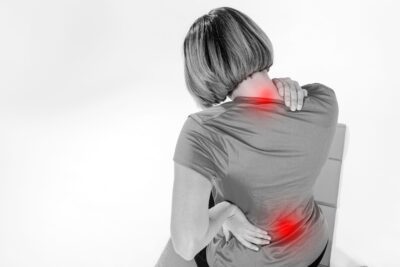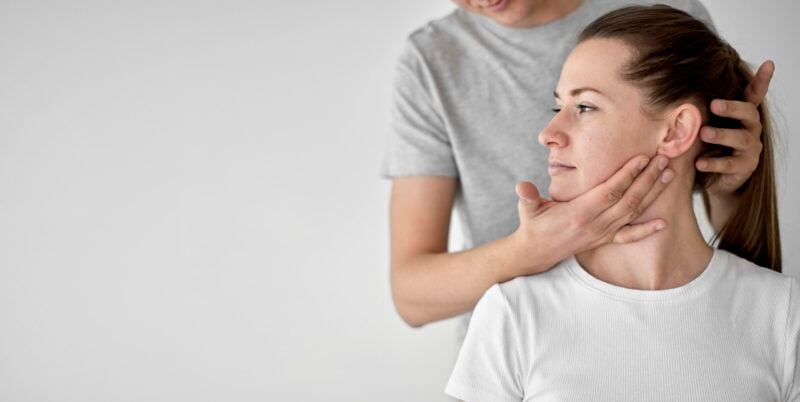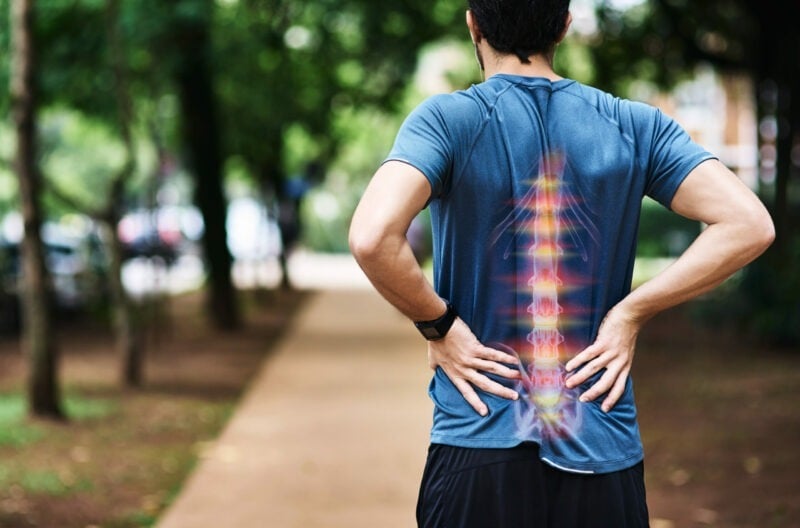What Conditions Can Decompression Treat?
Spinal Decompression is an effective treatment for pinched nerves, sciatica, bulged or herniated discs, radiating arm or neck pain, headaches, degenerative disc disease, and facet syndrome.
It is often recommended as a treatment alternative for many types of lower back pain, sciatica (leg pain), or neck pain caused by a herniated disc, bulging disc, or degenerated disc.
The success rate varied from 73% for patients with a single herniated disc. It was 72% for people with multiple herniated discs. The American Journal of Pain Management reported “good to excellent” relief in 86% of patients with herniated discs, with back pain and sciatica symptoms being relieved.

What to Expect on the Decompression Table
Positioning on the table for a lower back condition…
The patient can be positioned on their back or stomach, whichever is more comfortable. This design is a feature of the Triton DTS table that is missing from many other tables. Once positioned on the table, padded straps are used to securely fasten the patient for treatment.
Positioning on the table for a neck condition…
The patient is put on their back in a semi-seated position where a soft rubber neck harness is used for the treatment. Once in place for the treatment, the computerized equipment starts to pull in small increments, as set by a qualified practitioner.
By using small increments the body is allowed to relax into the treatment which allows the treatment to be more effective and more comfortable. Once the desired amount of tension is reached it is held for 45-60 seconds (dependent on the condition) followed by a 30-second interval of a decreased amount of tension (approximately half of the upper limit).
This continues for 15-25 minutes and then is followed by a slow incremental lowering of tension until no tension is left on the patient.
Many patients have stated that it doesn’t feel like the table is pulling hard enough or that they can handle more, which tells us that it is doing its job properly. The less the patient feels with the appropriate amount of pull the more relaxed their body has become and the more effective the treatment is likely to be. This aspect of treatment is very important as proper parameters (settings) are what make this equipment work. Experience goes a long way when it comes to patient outcomes.
Spinal Decompression versus Traction: Are they the same thing?
Spinal Decompression Therapy is a step beyond traction. Spinal Decompression Units not only pull the spine, they actually “sense” how much force the body is pulling back with, and can decrease the amount of pull when needed. This helps prevent the traction-caused muscle spasms that used to be so prevalent with the type of Spinal Traction used in some provider’s offices.
Our table utilizes a computerized feedback system that senses if your body begins to tighten up. When it does, our Decompression Table automatically backs off. Essentially your body is being tricked into not realizing that it is being “pulled” (Decompressed). Thus, it will not typically cause the back to spasm like Traction Tables frequently do. That is why before and after comparison MRI’s of Decompression patients have actually shown objective improvements in disc hydration, reduction of disc bulges, and reduced nerve impingement (sciatic leg pain).

Recognizing the Difference between Decompression and Traction
Spinal Decompression Therapy has become very popular due to the fact that it works! This technology has spared many people from having dangerous spinal surgeries performed. Because of this, many manufacturers and doctors have jumped on the decompression bandwagon.
There are many machines or devices that have been incorrectly coined as “Spinal Decompression” units when in reality, they are still traction machines but have been refit with some added features, providing the allusion that the treatment technology has been advanced beyond traction. You know; colored lights, computer screens, digital readouts —– all of the bells, and whistles. A few examples of traction machines that appear to be or are marketed as Decompression under this allusion are some Roller Tables or Inversion Tables.
The big thing to look out for or to ask about is the machine’s use of computerized feedback. This is a key advantage of Decompression over Traction and is what has the research behind it, proving to work effectively to reverse disc herniations.
Keep Reading…
Do You Have Neck Pain? Physical Therapy Can Help
Neck pain can affect every aspect of your life, [...]
The Importance of Posture | How Can Physical Therapy Help?
In the era of remote work and digital dominance, [...]
5 Core Exercises For A Healthy Back
A strong core is essential for good posture, balance, [...]
Can Your Posture Affect Your Breathing? Try This Quick Experiment
We have all been told numerous times to “stand [...]
Say Goodbye to Back Pain: Tips for Prevention from a Physical Therapist
Back pain is a common issue that affects nearly [...]
Do You Know Why You Have Back Pain? Here’s How You Can Find Out
Is the source of your low back pain a [...]






